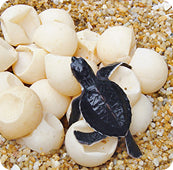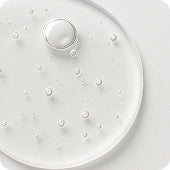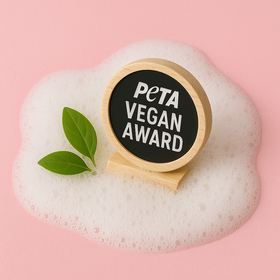Plastic in your mouth again? Not so tasty!
Plastic in your mouth again? Not so tasty!

Whether bubble gum, dental care, against nervousness, travel sickness or nicotine addiction. According to estimates, every German chews around 100 chewing gum sticks or dragees a year. But what is chewing gum actually made of?
The exact ingredients of the "chewing base" are not subject to labelling, since chewing base is legally considered an additive. The exact composition remains a trade secret. However, it is assumed that the majority of chewing gum is made from plastics, since natural products are not available in quantity and are more expensive. That means we chew on plastic...
The polymers, which are made from petroleum, can also be found in car tires. That not only sounds absurd at first, but is also ecologically questionable. Commercial chewing gum is not biodegradable. Especially when he is carelessly spat onto the streets.
- In some German towns, up to 100 chewing gum stains can be found in just one square meter.
- The removal of extremely dirty chewing gum from Germany's streets costs an estimated 900 million a year
Dried chewing gum cannot simply be removed from the street with a sweep or brush. The chewing gum stains must be removed with pressure washers or dry ice methods.
- Chewing gum is the second most common type of litter in the world, generating approximately 100,000 tons of global litter each year
Why are you chewing gum?
Depending on the chewing gum, different functions can be fulfilled. Chewing the gum can reduce stress or increase performance, prevent tooth decay, reduce bad breath or substitute cigarettes. Children especially like the sweet taste, the bright colors and of course: chewing gum bubbles.
Is chewing harmful to health?
Chewing gum is just plain fun!
Only when chewing gum is consumed excessively can chewing gum have a laxative effect - "Hello, toilet!". The constant chewing also causes the brain to be signaled to produce stomach acid and digestive enzymes. This can, for example, attack the stomach lining or lead to heartburn.
Myth: Chewing gum sticks to the stomach
You probably heard that from your parents as a child:
"If you swallow the gum, it sticks up in your stomach."
However, this is just a common myth and chewing gum is usually passed without any problems. It is neither decomposed by gastric acid nor can it settle in the stomach because the gastric mucosa prevents this.
Our tip: So that the chewing gum does not end up in the environment via waste water, you should still dispose of it in the residual waste.
Offer chewing gum, look for rainforest
For the oil production, which is required for the production of plastic, large areas of rainforest often have to suffer and with it the animal and plant world there. When drilling or when pipelines break ( long-distance pipeline for pipeline transport), crude oil gets into the environment and can cause major damage there, for example contaminating drinking water. Indigenous peoples who live in these assisted areas are also mostly violently expelled from their areas.
Without renunciation
But if you don't want to chew on petroleum, you still don't have to do without chewing gum. Because there are now several chewing gum manufacturers who produce in a sustainable way and use an alternative to plastic chewing base. These use the "original chewing gum" again. The natural chewing base consists of chicle, which is obtained from the milky juice of the pulp apple tree. The use of chicle as a chewing base is even dated back to the Mayas.
The pulp apple trees are also found in the tropics. The ecological balance is not outstanding due to the long transport routes, but it is still more sustainable than that of standard chewing gum. Unlike petroleum-based chewing gum, however, chicle chewing gum is biodegradable. Nevertheless, they belong in the residual waste and not just stuck under the table.
Under the motto "Fantastic without plastic" , Forest Gum , based in Germany, produces chicle-based, vegan and sugar-free chewing gum without any plastic packaging and operates direct trade. According to its own statements, the company pays attention to fair working conditions along the entire value chain.
If you want it even more regional, you can try Alpengummi . This is produced in Austria and made from pine resin and birch sugar. However, beeswax is also used for consistency.
For those who prefer to reach for chewing gum in the supermarket, there is True Gum . Also plastic-free, vegan and sustainably produced from chicle. True Gum already has some delicious strains to offer.
Our conclusion
It is also very easy to switch to a sustainable and plastic-free alternative when chewing gum. Without sacrifice, with fair payment for the chicleros (workers who harvest the milky sap) or even from resin and sap from trees in the Alps.
If you would like to be informed directly about the latest blog posts, please follow us Instagram ! :-)











